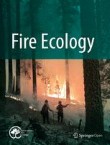Fire Ecology is the official journal of the Association for Fire Ecology.
The effect of scale in quantifying fire impacts on species habitats
Fire size and severity have increased in the western United States in recent decades, and are expected to continue to increase with warming climate. Habitats for many species are threatened by large and high-s...
